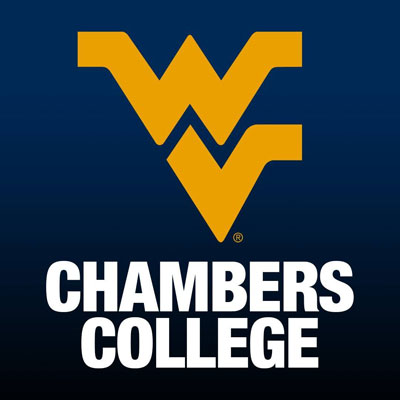Dr. Lauren Cook, an assistant professor of marketing at the West Virginia University College of Business and Economics, is breaking down barriers when it comes to collaboration not only across departments or the WVU campus, but with universities across the country.
Cook, along with faculty members from Mississippi State University and Ohio University, have teamed up on a project they are calling B-school Collaboration for Marketing Courses, which takes place in her Marketing 315 Buyer Behavior courses.
“A cohort of marketing faculty members and I have an active online presence and have been using a variety of social media to engage students outside of our classrooms. Last spring, we tested the idea of a B-School collaboration with live conversations on Twitter as each Super Bowl advertisement was shown. Soon, our students were exchanging comments with each other and all of the participating faculty members. As each of us returned to our classes, we quickly realized how beneficial the experience was for all of our students,” Cook said of the project.
With the hype from the Super Bowl advertisement test, Cook, along with Dr. Alexa Fox from Ohio University and Alexandra Krallman and Jennifer Stevens from Mississippi State, have incorporated a similar system in their consumer behavior courses this fall. Using the unified hashtag #WOMf16, the four instructors release a consumer behavior question on Twitter for their students to answer each week.
“This project is intended to continue class outside of the physical limits of classroom time and we’ve expanded the experience to three different campuses. The idea is to have students engage with each other across institutions and also with actual firms,” she said.
Only five weeks into the project, this collaborative effort is proving very successful. At the time of press, results were in for Week 3. The original question that week garnered a 34.9% engagement rate, 236,821 impressions, a reach of 104,982 with 182 users and more than 500 posts. Students are also interacting with major corporations and businesses like Amazon, Jimmy John’s and Walmart.
“Looking at our analytics, the campaign has been extremely successful. It is a lot less static and a much more dynamic conversation. It changes learning. Every week, my colleagues and I discuss that week’s results. We had high expectations, but we’re all doing the happy dance realizing that students are responding so favorably,” Cook said.
Not only is this project fostering the ability for students to engage with their professors, other students and businesses, as well as think about consumer behaviors outside of the classroom, they are actually gaining real world knowledge and experience. The project allows for students to actually apply the concepts they are learning in the classroom.
“It comes down to the science of how students learn. Each class period, I go over concepts and try to help them apply it. With this, the experiential component gets to actually apply some of these concepts. They can’t just answer yes or no or say, ‘I agree with you.’ They have to say, ‘Oh, this concept of supply chain technology evolutions would be appropriate in this context and inappropriate here.’ They are really drilling down the information and how it would affect a marketing manager’s role,” Cook explained. “It’s really ringing some bells and making it real.”
Cook believes this is also advantageous for the College as a whole due to how B&E students are positioned and perceived compared to other business school students.
“It’s beneficial because it’s fun, but also because of positioning. We are in a set of business schools that are leading this discussion. We’re talking about news real-time and making the classroom material applicable to how the environment is changing. Business leaders are seeing the nature of the conversations, which frames WVU business students in a positive light.”
Along with the success shown in the numbers, Cook says that more of her colleagues are interested in joining and growing the conversation in upcoming semesters. Additionally, she sees this becoming a real research project.
“Eventually, this will turn into a manuscript that we hope to get published in perhaps the Journal of Marketing and Education. We’ll be able to show other practicing academics innovative ways to extend the learning environment,” Cook said.

